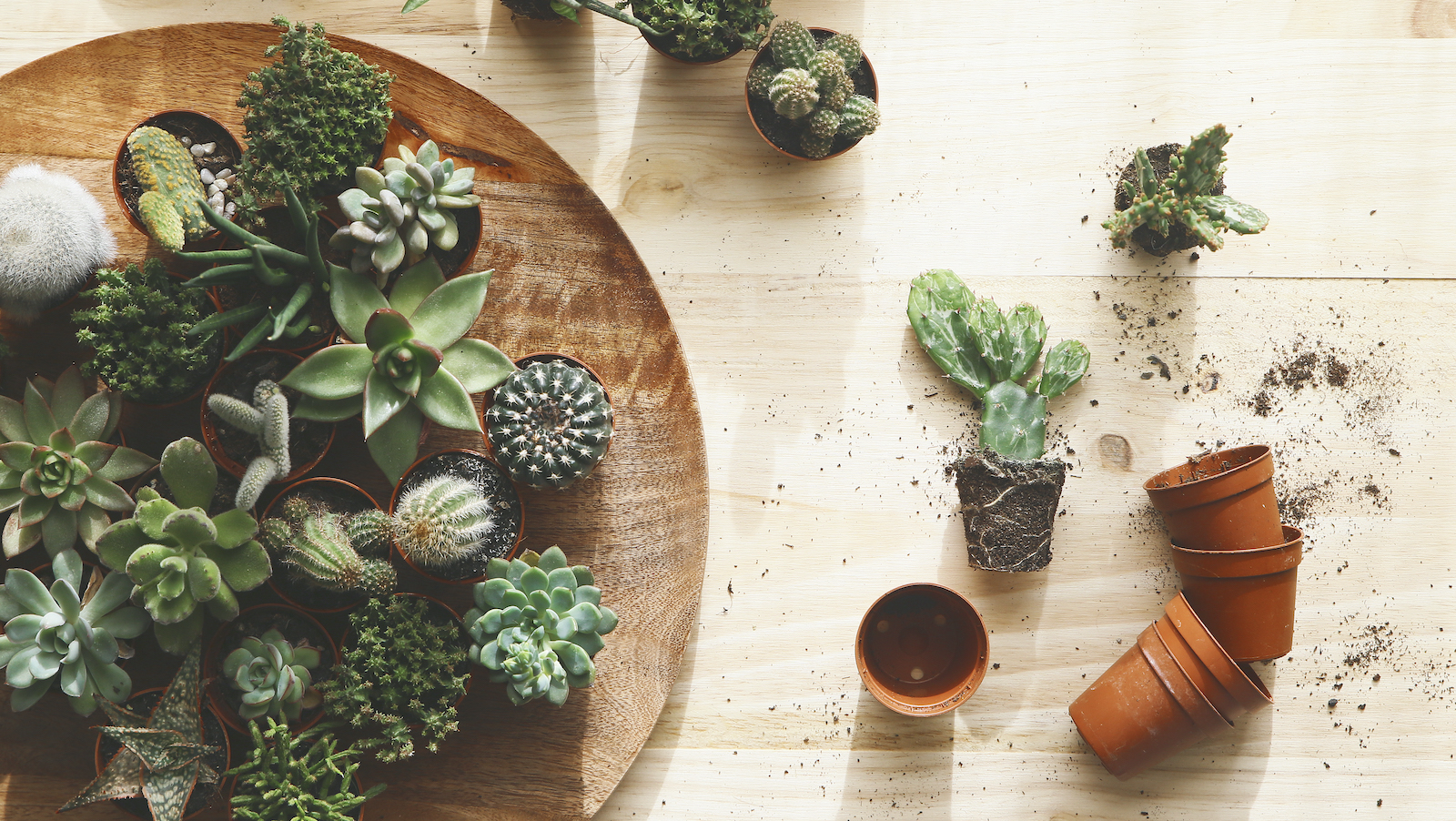How to repot succulents like a pro — dos, don'ts, and everything in between
Every plant parent should know how to repot succulents, so we asked the experts to shell out their best tips


It might not be a regular occurrence, but learning how to repot succulents is a must for all plant parents.
Just like us, our favorite greenery can outgrow their space and need a pot upgrade. Give them room proper to grow and stay happy with our plant experts' repotting dos and don'ts.
Upsizing the homes of these no-fuss indoor plants is a breeze with our green-thumbed experts on hand with repotting advice and tips, include essential things to avoid.
How to repot succulents, according to the pros

Learning how to care for succulents means staying attuned to their housing needs. Trust us, they'll give you a heads up when it's time to make a switcheroo, so here are the clues you will need to keep an eye out for.
"I've learned to look out for certain signs that my succulents are ready for a new pot," says Emily Jones, the founder of Tomato Mentor. "If they've grown too big for their current container, or if the soil dries out too quickly, it's usually time."
Other red flags include roots peaking out of drainage holes and leaves that are tipping over.
"These signs tell me that my succulent needs more room to grow or that the soil isn't supporting its needs anymore," Emily adds.
Get small space home decor ideas, celeb inspiration, DIY tips and more, straight to your inbox!
So now that you've learned about the warning signs when gardening in an apartment, the next step is rectifying the situation by repotting.

Emily is the founder of Tomato Mentor. She is a professional gardener who has always felt enticed by anything related to plants. Considering she's been growing tomatoes for over 30 years and she has been able to grow any plant she's set her mind to, we're certain she knows her way around healthy greenery.
1. Handle with care
When caring for your houseplants, of course you're going to want to treat each of your green babies gently. After all, they're in a state that requires some TLC. Remove the plant from their current pot delicately.
"It's crucial to handle the succulent carefully to avoid damaging its roots or leaves," says Gene Caballero, co-founder of GreenPal.
However, that doesn't mean you can't play with the roots if necessary.
"If the roots look tightly bound, I gently tease them apart to encourage growth," Emily adds.
2. Choose an appropriate pot
Some plant parents (including yours truly) have learned this the hard way: just because you've stumbled upon cute plant pots, it doesn't mean they're appropriate for your succulents.
If they don't have a drainage system, they're probably not worth adding to your collection, especially if you want to prevent water-logging.
"Choosing a new pot with drainage holes is crucial," Emily says. "I always go for one that's a bit larger than the old one but not too big. Cover the holes with netting to keep the soil in while letting water out."
3. Do find the right soil
"The best way to repot succulents involves gently removing the plant from its current pot, shaking off old soil, and placing it in a new pot with fresh, well-draining soil designed for succulents," Gene says.
Emily recommends well-draining soil, usually a mix of peat and coarse sand, to prevent water retention. Miracle-Gro Succulent Potting Mix on Amazon has earned 4.6/5 stars, should you be looking to add one to your shopping basket.
4. Don't water right away
Many people are surprised to learn how often to water succulents. When transferring them to a new home, don't feel the need to hydrate them.
"Wait a few days after repotting before watering to allow the plant to adjust and avoid root rot," Gene says.
What to shop
Looking for more ways to add greenery to your space? We've rounded up 12 easy house plants that are low-maintenance, forgiving, wonderfully indestructible, and of course, eye-catching.

Pleasure to meet you! I'm Danielle, a content editor at Real Homes who loves scoping out interior trends. I've specialized in lifestyle writing and editing for 10 years with a focus on events, food, and books, among other areas. When I'm not working, I'm usually cooking, reading, or searching for a new project for my apartment.
